1-Naphthaleneacetic acid
Synonym(s):α-Naphthaleneacetic acid;1-Naphthylacetic acid;NAA
- CAS NO.:86-87-3
- Empirical Formula: C12H10O2
- Molecular Weight: 186.21
- MDL number: MFCD00004126
- EINECS: 201-705-8
- SAFETY DATA SHEET (SDS)
- Update Date: 2024-12-18 14:08:52
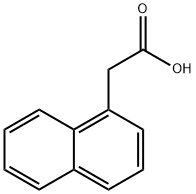
What is 1-Naphthaleneacetic acid?
Description
1-naphthaleneacetic acid (NAA), also known as α-naphthaleneacetic acid, belongs to a class of organic compounds of naphthalenes, which contain a naphthalene moiety of two fused benzene rings. NAA is a synthetic auxin plant hormone. It is used as a plant growth regulator to control preharvest fruit drop, flower induction and fruit thinning in various crops such as apples, potatoes, olives, and citrus fruits. It is used as a rooting agent and used for the vegetative propagation of plants from stem and leaf cutting. It is also used for plant tissue culture and as herbicide. Applied as a dust or spray it delays dissolution of the abscission layer, retarding the fruit drop. The effect of NAA on plant growth is greatly dependent on the time of admission and concentration. When used after four weeks, NAA stimulates shoot growth, while full-time use limits growth. When used in a 4-week pulse, adventitious root growth is greatly increased.
Chemical properties
White needle crystal or crystalline powder, odorless. Slightly soluble in cold water and ethanol, easily soluble in hot water, acetone, ether, chloroform, benzene, acetic acid and alkali solution.
The Uses of 1-Naphthaleneacetic acid
1-Naphthaleneacetic Acid, is widely used in agriculture for various purposes. It is a synthetic plant hormone in the auxin family and is an ingredient in many commercial plant rooting horticultural products. Inducing rooting of plant cuttings, spraying apple trees to prevent early drop, fruit thinner.
What are the applications of Application
1-Naphthaleneacetic acid (NAA) is a synthetic phytohormone auxin that is added to cell culture media such as Murashige & Skoog media and Chu′s N6 media.
What are the applications of Application
1-Naphthylacetic acid is a tested plant culture
Definition
ChEBI: 1-naphthaleneacetic acid is a naphthylacetic acid substituted by a carboxymethyl group at position 1. It has a role as a synthetic auxin. It is a conjugate acid of a 1-naphthaleneacetate.
Preparation
Industrially, 1-naphthaleneacetic acid is prepared by condensation reaction of naphthalene and chloroacetic acid in the presence of catalyst potassium chloride or aluminum powder.
General Description
1-Naphthaleneacetic acid is widely employed in agriculture as a synthetic plant hormone in the auxin family or a plant growth regulator, which can find applications in tissue culture. It is used for the vegetative propagation of plants from stem and leaf cutting, abscission promoter and substrate for auxin inducers of specific plant enzymes. Further, it stimulates root formation in cuttings of woody and herbaceous plants. It is also used to prevent premature flower and fruit drop. It is also employed to control regrowth of tree sprouts after trimminguse. In addition to this, it is used in ornaments and serves as an ingredient in many commercial plant rooting horticultural products.
Hazard
Skin irritant.
Agricultural Uses
Plant growth regulator: An agent for thinning fruit sets in apples, pears, olives and some citrus. Induces root formation on cuttings and transplants. Inhibits fruit drops. Not currently registered in EU countries (pending). Registered for use in the U.S. and Canada.
Trade name
AGRONAA®; ALCO® NAA; ALPHASPRA ®; AMCOTONE® APPL-SET®; CELMONE®; DESTRUXOL®; DIP’N GROW®; FRUITONE®; GOLDENGRO®; HORMEX®; KLINGTITE®; LIQUISTIK ®; NAA 800®; NAFUSAKU®; NIAGARASTIK ®; NU-TONE®; PARMONE®; PHYMONE®; PIMACOL-SOL®; PLANOFIX®; PLUCKER®; PRIMACOL®; RHIZOPON B ROOTING POWDER; ROOTONE® (component, with Indole-3-butyric acid and 1-Naphthaleneacetamide); STAFAST®; STIK®; STOPDROP ®; TEKKAM®; TIPOFF®; TRANSPLANTONE® (component, with 1-Naphthaleneacetamide); TREHOLD ®; VARDHAK®
Biochem/physiol Actions
1-Naphthaleneacetic acid is one of the synthetic auxins, used in plant propagation. It can induce the formation of lateral and adventitious roots.
Safety Profile
Poison by intraperitoneal route. Moderately toxic by ingestion. Mutation data reported. A skin, mucous membrane, and severe eye irritant. Can cause depression. A pesticide, When heated to decomposition it emits acrid smoke and irritating fumes.
Potential Exposure
1-Naphthaleneacetic acid is a carboxylic acid plant growth regulator used for thinning fruit sets in apples, pears, olives, and some citrus. Induces root formation on cuttings and transplants. Inhibits fruit drops. Not currently registered in EU countries (may be pending).
Shipping
UN1759 Corrosive solids, n.o.s., Hazard Class: 8; Labels: 8-Corrosive material, Technical Name Required.
Purification Methods
Crystallise the acid from EtOH or water. [Beilstein 9 H 666, 9 IV 2424.]
Incompatibilities
Incompatible with oxidizers (chlorates, nitrates, peroxides, permanganates, perchlorates, chlorine, bromine, fluorine, etc.); contact may cause fires or explosions. Keep away from alkaline materials, strong bases, strong acids, oxoacids, epoxides, chlorates nitrates, ammonia, aliphatic amines, alkanolamines, isocyanates, alkylene oxides, epichlorohydrin. Compounds of the carboxyl group react with all bases, both inorganic and organic (i.e., amines) releasing substantial heat, water and a salt that may be harmful. Incompatible with arsenic compounds (releases hydrogen cyanide gas), diazo compounds, dithiocarbamates, isocyanates, mercaptans, nitrides, and sulfides (releasing heat, toxic, and possibly flammable gases), thiosulfates and dithionites (releasing hydrogen sulfate and oxides of sulfur).
Waste Disposal
Incineration. In accordance with 40CFR165, follow recommendations for the disposal of pesticides and pesticide containers.
References
[1] https://en.wikipedia.org/wiki/1-Naphthaleneacetic_acid
[2] http://pmep.cce.cornell.edu/profiles/herb-growthreg/naa-rimsulfuron/naa/herb-prof-naa.html
Properties of 1-Naphthaleneacetic acid
| Melting point: | 141-143 °C(lit.) |
| Boiling point: | 280.69°C (rough estimate) |
| Density | 1.1032 (rough estimate) |
| refractive index | 1.6010 (estimate) |
| Flash point: | >100°C |
| storage temp. | Sealed in dry,Room Temperature |
| solubility | acetone: 50 mg/mL, clear |
| form | crystalline |
| pka | 4.30±0.30(Predicted) |
| color | light yellow |
| PH | 3.0 (0.6g/l, H2O, 25℃) |
| Odor | Odorless |
| Water Solubility | Slightly soluble in water, ethanol, acetone, chloroform and ether. |
| Merck | 14,6371 |
| BRN | 1308415 |
| Stability: | Hygroscopic |
| CAS DataBase Reference | 86-87-3(CAS DataBase Reference) |
| NIST Chemistry Reference | 1-Naphthaleneacetic acid(86-87-3) |
| EPA Substance Registry System | 1-Naphthaleneacetic acid (86-87-3) |
Safety information for 1-Naphthaleneacetic acid
| Signal word | Danger |
| Pictogram(s) |
 Corrosion Corrosives GHS05  Exclamation Mark Irritant GHS07 |
| GHS Hazard Statements |
H302:Acute toxicity,oral H315:Skin corrosion/irritation H318:Serious eye damage/eye irritation H335:Specific target organ toxicity, single exposure;Respiratory tract irritation H412:Hazardous to the aquatic environment, long-term hazard |
| Precautionary Statement Codes |
P261:Avoid breathing dust/fume/gas/mist/vapours/spray. P273:Avoid release to the environment. P280:Wear protective gloves/protective clothing/eye protection/face protection. P305+P351+P338:IF IN EYES: Rinse cautiously with water for several minutes. Remove contact lenses, if present and easy to do. Continuerinsing. |
Computed Descriptors for 1-Naphthaleneacetic acid
| InChIKey | PRPINYUDVPFIRX-UHFFFAOYSA-N |
1-Naphthaleneacetic acid manufacturer
JSK Chemicals
CNS CHEMICALS
Anand Agencies
R J Organics
Techno Pharmchem
Cns Chemicals
New Products
(S)-3-Aminobutanenitrile hydrochloride 4-Methylphenylacetic acid N-Boc-D-alaninol N-BOC-D/L-ALANINOL Tert-butyl bis(2-chloroethyl)carbamate 3-Morpholino-1-(4-nitrophenyl)-5,6-dihydropyridin- 2(1H)-one Furan-2,5-Dicarboxylic Acid Tropic acid 1-Bromo-3,5-Di-Tert-Butylbenzene S-2-CHLORO PROPIONIC ACID ETHYL ISOCYANOACETATE 2-Bromo-1,3-Bis(Dimethylamino)Trimethinium Hexafluorophosphate 4-IODO BENZOIC ACID 3-NITRO-2-METHYL ANILINE 1-(2,4-DICHLOROPHENYL) ETHANAMINE (2-Hydroxyphenyl)acetonitrile 4-Bromopyrazole 2-(Cyanocyclohexyl)acetic acid 4-methoxy-3,5-dinitropyridine 1-(4-(aminomethyl)benzyl)urea hydrochloride 2-aminopropyl benzoate hydrochloride diethyl 2-(2-((tertbutoxycarbonyl)amino) ethyl)malonate tert-butyl 4- (ureidomethyl)benzylcarbamate Ethyl-2-chloro((4-methoxyphenyl)hydrazono)acetateRelated products of tetrahydrofuran
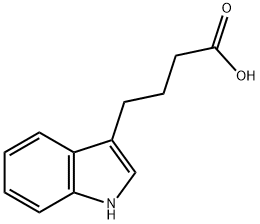
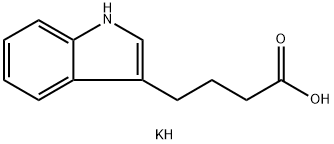
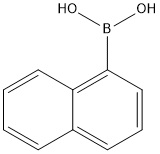


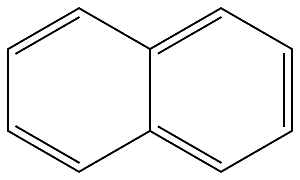


You may like
-
 1-Naphthaleneacetic acid 98%View Details
1-Naphthaleneacetic acid 98%View Details -
 Naphthalene-1-Acetic Acid (NAA) extrapure CAS 86-87-3View Details
Naphthalene-1-Acetic Acid (NAA) extrapure CAS 86-87-3View Details
86-87-3 -
 Naphthalene-1-Acetic Acid (NAA) for tissue culture CAS 86-87-3View Details
Naphthalene-1-Acetic Acid (NAA) for tissue culture CAS 86-87-3View Details
86-87-3 -
 1-Naphthylacetic acid, GR 99%+ CAS 86-87-3View Details
1-Naphthylacetic acid, GR 99%+ CAS 86-87-3View Details
86-87-3 -
 1-Naphthylacetic acid, 99% CAS 86-87-3View Details
1-Naphthylacetic acid, 99% CAS 86-87-3View Details
86-87-3 -
 1-Naphthaleneacetic Acid CAS 86-87-3View Details
1-Naphthaleneacetic Acid CAS 86-87-3View Details
86-87-3 -
 1-NAPHTHYLACETIC ACID For Synthesis CAS 86-87-3View Details
1-NAPHTHYLACETIC ACID For Synthesis CAS 86-87-3View Details
86-87-3 -
 1-Naphthaleneacetic acid CAS 86-87-3View Details
1-Naphthaleneacetic acid CAS 86-87-3View Details
86-87-3